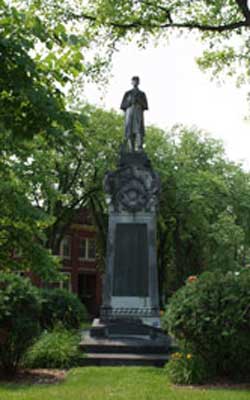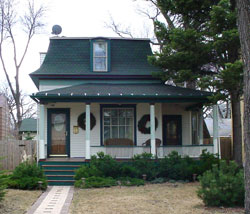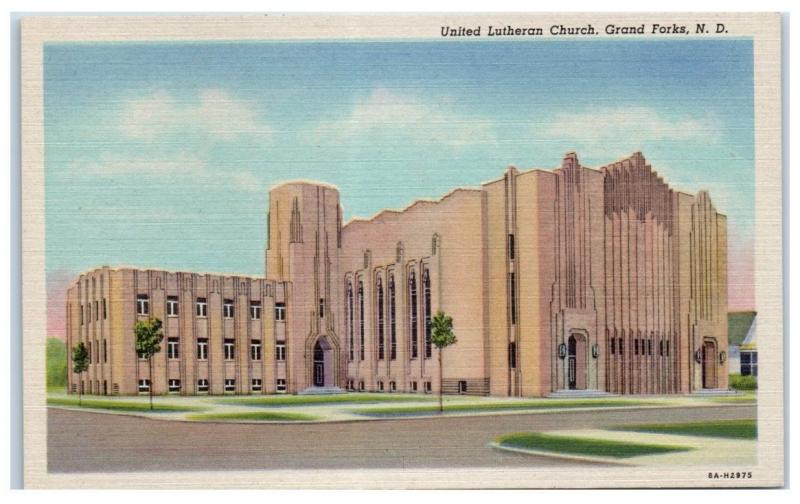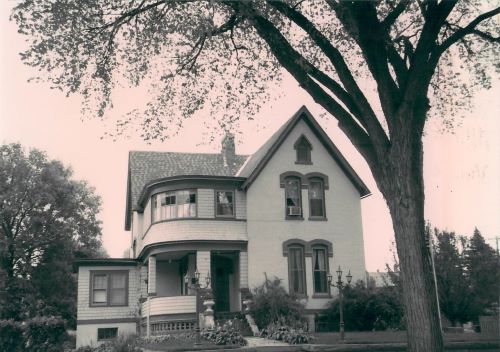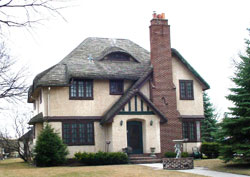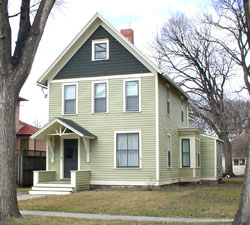The Near Southside Historic District is anchored on the north end by the Grand Army of the Republic statue at Belmont and Gertrude, and by United Lutheran Church, and at the south end by South Junior High School (now Alcott Manor).
The Near Southside Historic District is eligible for listing in the National Register of Historic Places for its
significant association with the earliest growth of the community’s residential, educational, and religious infrastructure. This growth is in turn directly related to federal Homestead legislation, the construction of transcontinental railroads, and the rapid settlement of the West that followed (criterion A.). The neighborhood also represents the diffusion of national architectural styles and their adaptation to local culture and climatic conditions (criterion C). The period of significance extends from 1878 when the Viets’ and Traill’s subdivisions were first platted in anticipation of the arrival of the Great Northern railroad, until 1942, the end of significant growth. Significant dates/events include the 1878 platting of many of the district’s subdivisions, the 1880 arrival of the Great Northern, the 1885 arrival of a branch line of the Northern Pacific, the 1887 construction of Belmont Elementary School, and the 1932 construction of South Junior High.
From the 1870s until the present, individuals significant in the history of Grand Forks (politicians, architects,
journalists, entrepreneurs, financiers, philanthropists) have lived in the northeast quadrant of the Near Southside neighborhood; the contributions of some of these men (and they are all men), have been recognized in individual National Register nominations. The neighborhood, however, as a whole, is not significantly or directly associated with any one individual’s contributions to local, regional, or national history. While additional individual homes within the district may be eligible for listing in the National Register of Historic Places under criterion B, the larger neighborhood is not. Instead, the significance of the district rests in part on the “cumulative importance of prominent residents”: criterion A.
A print brochure is available from City Hall or the HPC office.
Read the National Register nomination here.
